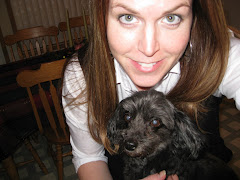I was reminded of this game after watching Lee LeFever’s video: Social Networking in Plain English. LeFever explains that in the real world, the connections between people are hidden from us. We often can’t see how people are connected, or to whom they are connected. However, when networks of people (or social networks) are displayed on the web, it allows us to see these connections that would be hidden in the real world. Thus, social networks are people networks, which reveal or create connections between people.
“What makes social network sites unique is not that they allow individuals to meet strangers, but rather that they enable users to articulate and make visible their social networks. This can result in connections between individuals that would not otherwise be made, but that is often not the goal, and these meetings are frequently between "latent ties" (Haythornthwaite, 2005) who share some offline connection. On many of the large SNSs, [social network sites] participants are not necessarily "networking" or looking to meet new people; instead, they are primarily communicating with people who are already a part of their extended social network” (Boyd & Ellison).
After joining a social network site, users are prompted to identify others in the system with whom they have a relationship. The label for these relationships differs depending on the site—popular terms include "Friends," "Contacts," and "Fans" (Boyd & Ellison). Many people refer to this as “friending;” which is just a way of noting that you have common interests on a web tool (Learning 2.0 Challenge).
A Brief History
“Social networking tools and technologies allow like-minded people to find each other” (Robin Good). Social networking has evolved with the expansion of the internet:
1995 = Classmates.com founded
1997 = Six Degrees of Separation founded
1999 = Circle of Friends founded
2002 = Friendster.com founded
2003 = MySpace.com founded
2004 = Orkut.com founded
2004 = Facebook.com founded
2005 = Yahoo!360 founded
(Source: NFi Studios)
For a comprehensive list, check out Wikipedia’s list of social networking websites, which also includes a brief description/focus for each site, and its intended audience for registrants.
A Social Network Timeline:

Source: Boyd & Ellison


1 comment:
Im always so impressed with your postings.....you're so thorough and well organized - and your info on SNS showcases it.
Post a Comment